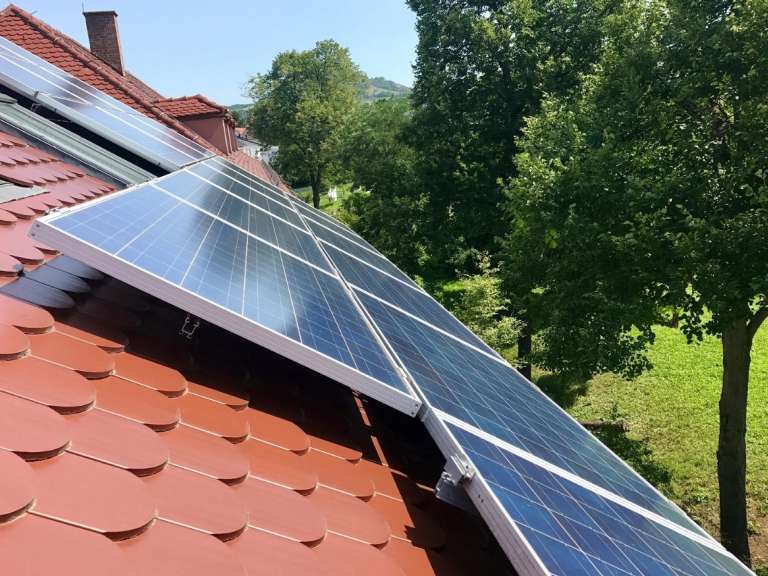California's Solar Home Mandate Is Following, Not Driving, Trends
Bentham PaulosThe solar home mandate in California may seem radical, but it just reflects the market and price trends that are already driving the boom in solar.

California's recent solar home mandate for new home construction may seem radical, but it merely reflects the market and price trends that are making solar a standard feature on middle-class homes.
The California Energy Commission released new energy efficiency standards for buildings in May to take effect in 2020. While building codes usually garner little attention outside of the construction industry, the solar mandate earned international headlines.
Critics alleged that the requirements would be costly, but the opposite is true—over the long term. The Commission estimated that the new codes would raise construction costs by $9,500 on average, but would save homeowners $19,000 over 30 years, according to CNBC. This works out to net savings of $40 per month, the Commission claims, making it a winning proposition. The rooftop solar systems, along with improved insulation, windows, and lighting, will help homes built under the new standards to use about 53 percent less energy than those under the 2016 standards, according to the Commission.
While this is the first building code in the country with a solar mandate, it's actually a less aggressive step than was anticipated. In 2008, the Commission set the goal of requiring all new homes to have net-zero energy needs by 2020, producing as much energy as they consume over the course of a year, according to the New York Times.
But the new standards backed off from that goal. Citing the massive growth of solar since 2008, the Commission says that a net-zero home would have diminishing benefits in cutting carbon emissions.
Instead, "the most important energy characteristic for a building will be that it produces and consumes energy at times that are appropriate and responds to the needs of the grid," the Commission wrote in the decision. A net-zero home would likely have months where it produced more electricity than the home needed, adding to the surplus of solar power that already occurs in spring months in the state.
To help integrate solar into the power grid, the standards encourage battery storage and electric-heat-pump water heaters, which can help increase the use of solar onsite, rather than exporting it to the grid. These electric technologies can also be controlled by utilities—a practice called demand response—to reduce demand during peak periods and suck up extra solar during the day.
How much new development the solar home mandate will drive will depend on the number of new homes built after 2020, when the rules take effect.
The Commission estimated that the code would drive 75,000 new solar systems annually, for a total of 215 MW of new capacity. New home construction, which reached over 200,000 units in 2004, crashed to only 36,000 when the housing bubble burst in 2008–2009, according to California state figures. Construction has been steadily rising, breaking 100,000 units in 2016, split evenly between single-family and multifamily buildings. California's very high housing prices suggest the number is likely to keep rising, making the official estimate seem low.
On the other hand, the code allows home builders to arrange for off-site or "community" solar if their buildings are unable to host enough on the roof, such as with large apartment buildings. So the total number may be hard to predict.
While 75,000 solar systems a year sounds like a lot, solar installers have exceeded that amount every year since 2014, doubling it in 2015 and 2016. The California Public Utilities Commission estimates that there are more than 700,000 systems just in the territories of the three large investor-owned utilities—not including major solar cities like Los Angeles and Sacramento, which are served by city-owned utilities. That adds up to 6,000 MW currently.
Recent research by Lawrence Berkeley National Laboratory shows that as the price of solar drops, adoption increases among the middle class. The study found that "the median income of [solar] adopters has been trending downward since 2010 and converging toward the median income for all owner-occupied households." In 2016, the median income of solar adopters was on par with that of all homeowners in California, Connecticut, Massachusetts, and Washington, DC.
While the California solar home mandate may seem radical, it's just an evolution of what's already happening in the marketplace. Residential solar is growing at such a pace that the new home requirement is only a modest increase in the number of solar homes.
The future of gas generation will by shaped by its relationship to renewables, regulations to keep costs down, and new drilling technologies.
Trends such as the solar power duck curve and consumer energy storage pose technology adoption challenges, as the role of power plants evolves.
What are the market forces that drive the use of battery storage systems?